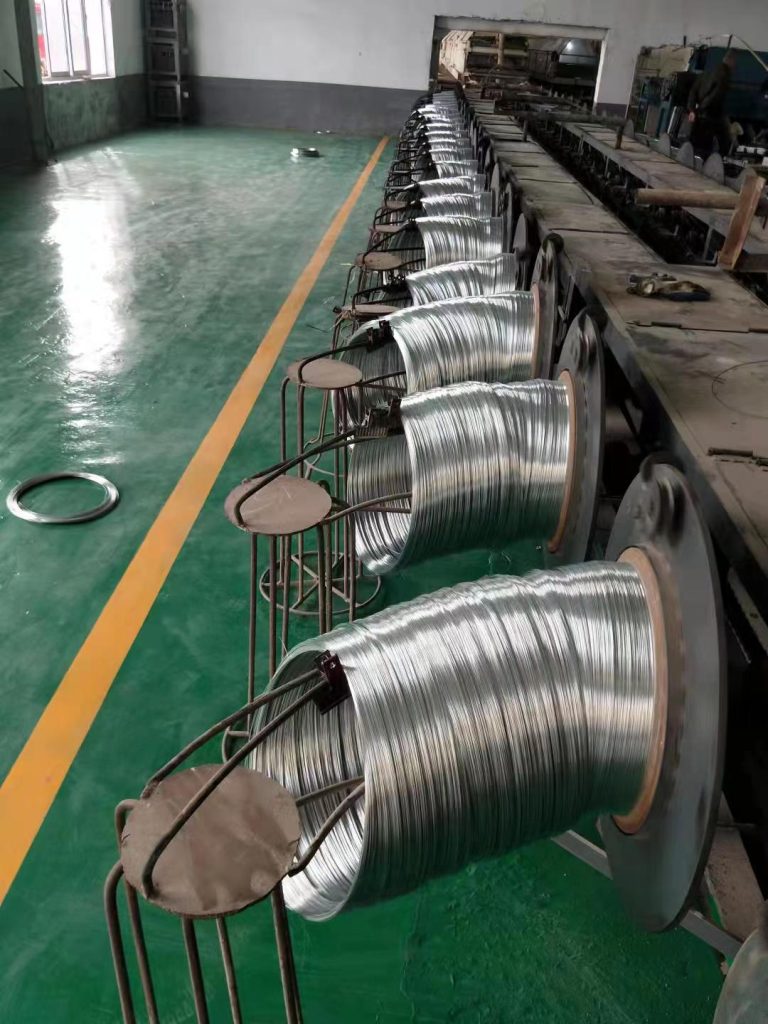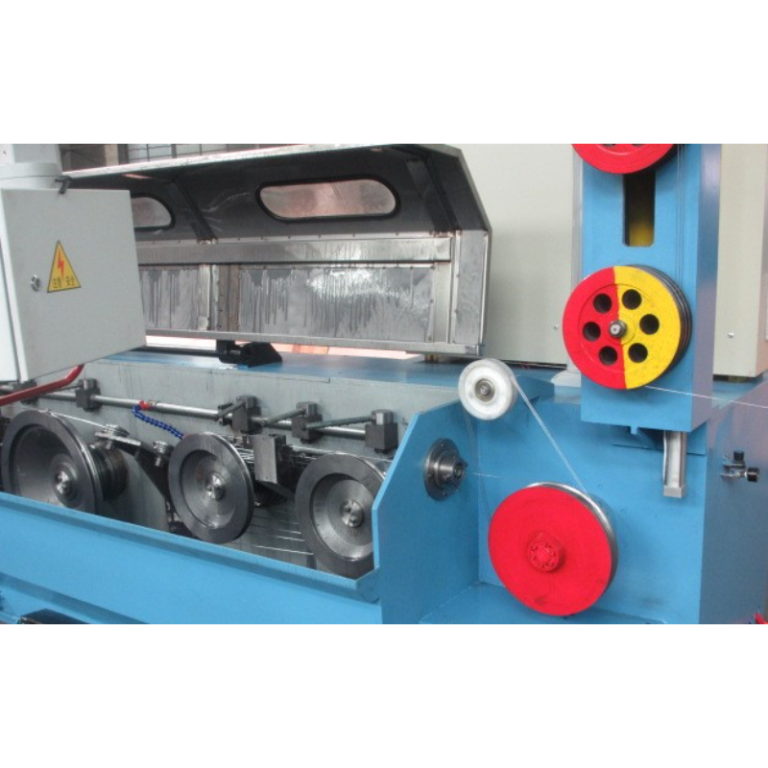Comparison of Different Dead Block Coiler Models for wire drawing machine
Wire drawing machines are essential equipment in the manufacturing industry, used to reduce the diameter of wire by pulling it through a series of dies. One crucial component of a wire drawing machine is the dead block coiler, which is responsible for winding the drawn wire onto a spool or coil. There are several different models of dead block coilers available on the market, each with its own unique features and advantages. In this article, we will compare and contrast some of the most popular dead block coiler models for wire drawing machines.
One of the most common types of dead block coilers is the stationary dead block coiler. This type of coiler is fixed in place and does not move during the Wire Drawing Process. Stationary dead block coilers are known for their simplicity and reliability, making them a popular choice for many manufacturers. However, one drawback of stationary dead block coilers is that they can be less efficient than other types of coilers, as they require the wire to be manually fed onto the spool.
In contrast, rotating dead block coilers are designed to rotate as the wire is drawn through the machine. This rotation helps to evenly distribute the wire onto the spool, resulting in a more uniform coil. Rotating dead block coilers are often preferred for high-speed wire drawing applications, as they can help to increase productivity and reduce downtime. However, rotating dead block coilers can be more complex and expensive than stationary coilers, making them less suitable for some manufacturers.
Another popular type of dead block coiler is the traversing dead block coiler. Traversing coilers are equipped with a mechanism that moves the spool back and forth as the wire is drawn through the machine. This movement helps to ensure that the wire is evenly wound onto the spool, preventing tangling and other issues. Traversing dead block coilers are often used for drawing fine wire or wire with a high tensile strength, as they can help to maintain the integrity of the wire throughout the drawing process.

In addition to these common types of dead block coilers, there are also specialized coilers available for specific applications. For example, some dead block coilers are designed to handle wire with a coating or lubricant, while others are equipped with sensors to monitor tension and speed. These specialized coilers can help to improve the quality and consistency of the drawn wire, making them a valuable investment for manufacturers with specific requirements.
When choosing a Static coiler dead block machines for a wire drawing machine, it is important to consider the specific needs of the application. Factors such as wire diameter, material, and production volume can all impact the choice of coiler. Additionally, manufacturers should consider the level of automation and control required, as well as the overall cost of the equipment.
In conclusion, dead block coilers are an essential component of wire drawing machines, helping to ensure that the drawn wire is wound onto a spool or coil in a consistent and efficient manner. By comparing the different types of dead block coilers available, manufacturers can choose the best option for their specific needs and requirements. Whether it is a stationary, rotating, traversing, or specialized coiler, selecting the right dead block coiler can help to improve productivity, quality, and overall performance in wire drawing applications.
Benefits of Using Dead Block Coiler in Wire Drawing Machine
Wire drawing machines are essential equipment in the manufacturing industry, used to reduce the diameter of wire by pulling it through a series of dies. One crucial component of a wire drawing machine is the dead block coiler, which plays a vital role in the wire drawing process. In this article, we will explore the benefits of using a dead block coiler in a wire drawing machine.

One of the primary advantages of using a dead block coiler is its ability to provide consistent tension control during the wire drawing process. Tension control is crucial in wire drawing as it ensures that the wire is pulled through the dies at a uniform rate, resulting in a consistent diameter and surface finish. The dead block coiler achieves this by maintaining a constant tension on the wire as it is wound onto the coiling drum, preventing any fluctuations that could lead to uneven drawing.
Another benefit of using a dead block coiler is its ability to handle a wide range of wire sizes and materials. Dead block coilers are designed to accommodate different wire diameters and materials, making them versatile and suitable for various applications. Whether you are drawing copper, aluminum, steel, or any other material, a dead block coiler can be adjusted to meet your specific requirements, making it a valuable asset in the wire drawing process.
In addition to providing consistent tension control and versatility,Wire Dead Block Coiler Machine also offer improved safety features compared to other coiling methods. The design of a dead block coiler ensures that the wire is securely wound onto the coiling drum, reducing the risk of accidents or injuries during the wire drawing process. This is especially important in high-speed wire drawing operations where safety is a top priority.
Furthermore, dead block coilers are known for their efficiency and reliability in wire drawing applications. By maintaining a constant tension on the wire and accommodating different wire sizes and materials, dead block coilers help to optimize the wire drawing process, resulting in higher productivity and quality output. With a dead block coiler in place, manufacturers can achieve faster production speeds and consistent wire quality, leading to cost savings and improved overall efficiency.
Overall, the benefits of using a dead block coiler in a wire drawing machine are clear. From providing consistent tension control and versatility to improving safety and efficiency, dead block coilers play a crucial role in the wire drawing process. Whether you are a small-scale manufacturer or a large industrial operation, investing in a dead block coiler can help you achieve better results and streamline your wire drawing operations.
In conclusion, dead block coilers are an essential component of wire drawing machines, offering a range of benefits that contribute to improved productivity, quality, and safety. By investing in a dead block coiler, manufacturers can optimize their wire drawing processes and achieve better results in their operations. Whether you are looking to upgrade your existing wire drawing equipment or invest in new machinery, consider the advantages of using a dead block coiler for your wire drawing needs.
Maintenance Tips for Dead Block Coiler in Wire Drawing Machine
A dead block coiler is an essential component of a wire drawing machine, responsible for coiling the drawn wire onto a spool or reel. Proper maintenance of the Dead Blocks coiler is crucial to ensure the smooth operation of the wire drawing machine and to prevent costly downtime. In this article, we will discuss some maintenance tips for the dead block coiler in a wire drawing machine.

One of the most important maintenance tasks for the dead block coiler is regular cleaning. Over time, dust, dirt, and debris can accumulate on the coiler, leading to increased friction and wear on the moving parts. This can result in decreased efficiency and performance of the coiler. To prevent this, it is recommended to clean the dead block coiler regularly using a soft brush or cloth to remove any buildup of dirt and debris.
In addition to cleaning, it is also important to lubricate the moving parts of the dead block coiler to ensure smooth operation. Lubrication helps reduce friction between the moving parts, preventing premature wear and extending the lifespan of the coiler. It is recommended to use a high-quality lubricant specifically designed for use in wire drawing machines. Be sure to follow the manufacturer’s recommendations for the type and frequency of lubrication.
Another important maintenance task for the dead block coiler is to check for any signs of wear or damage on the moving parts. Inspect the bearings, rollers, and other components for any signs of wear, such as cracks, dents, or corrosion. Replace any worn or damaged parts immediately to prevent further damage to the coiler and ensure the smooth operation of the wire drawing machine.
Regularly inspecting the tension settings of the dead block coiler is also important for maintaining optimal performance. Improper tension settings can lead to uneven winding of the wire onto the spool or reel, resulting in poor quality wire and potential damage to the coiler. Adjust the tension settings as needed to ensure proper winding of the wire and prevent any issues with the coiler.
In addition to these maintenance tasks, it is also important to regularly check the alignment of the dead block coiler with the wire drawing machine. Misalignment can cause the wire to coil unevenly onto the spool or reel, leading to quality issues and potential damage to the coiler. Adjust the alignment of the coiler as needed to ensure smooth and consistent coiling of the wire.
By following these maintenance tips for the dead block coiler in a wire drawing machine, you can ensure the smooth operation of the coiler and prevent costly downtime. Regular cleaning, lubrication, inspection of moving parts, tension settings, and alignment are all essential tasks for maintaining the optimal performance of the coiler. By taking care of your dead block coiler, you can extend its lifespan and ensure the efficient production of high-quality wire.





